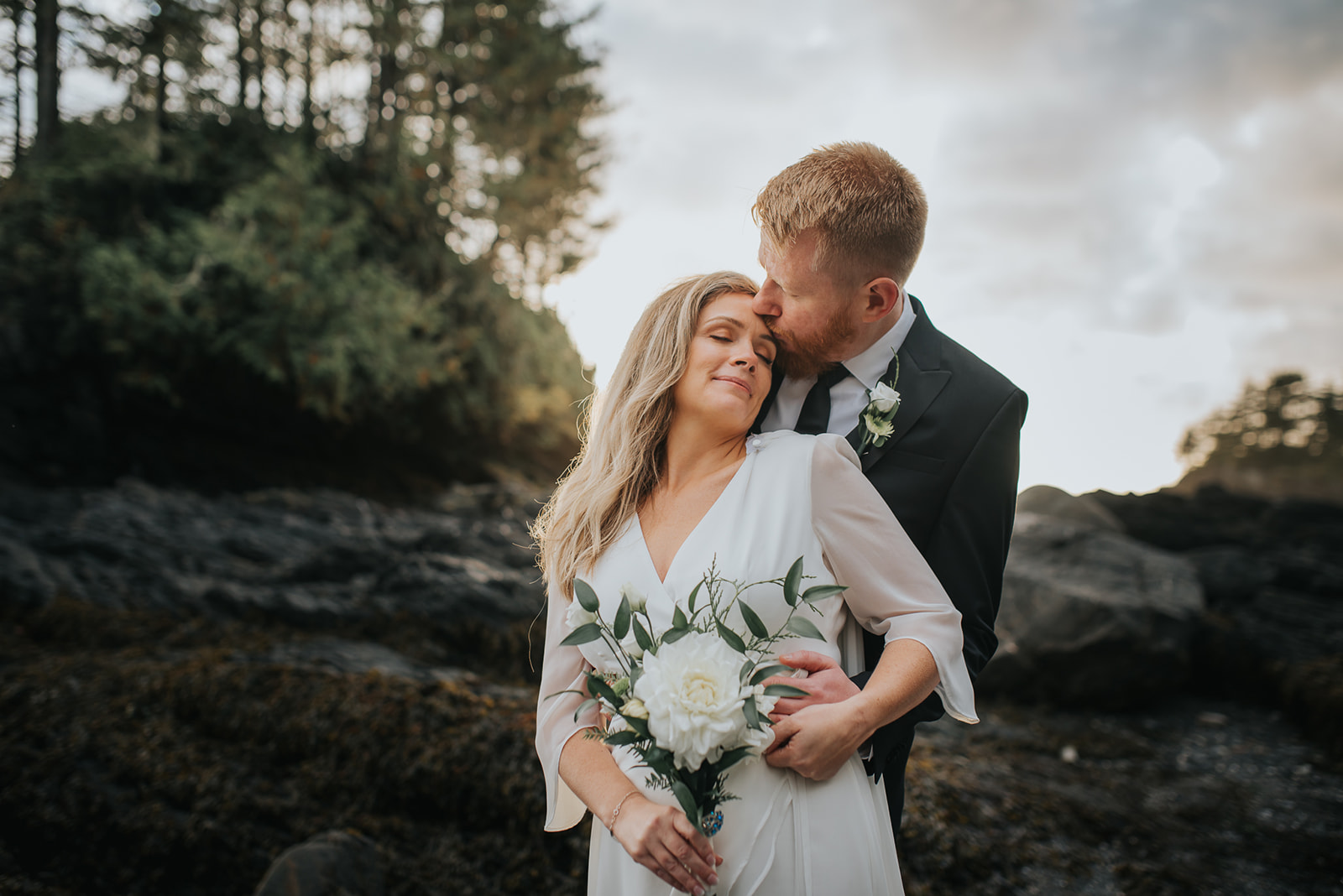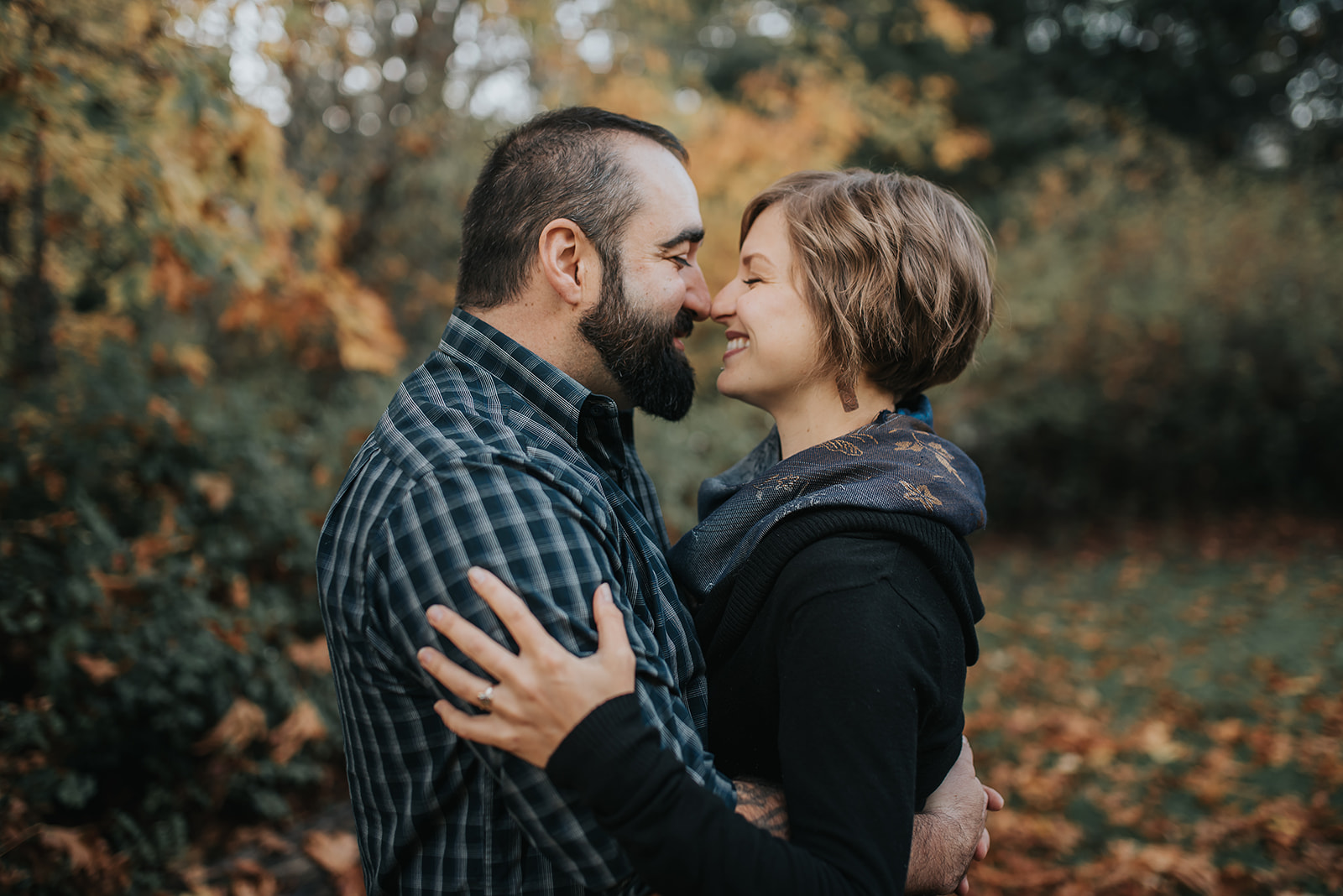We as photographers all strive to make people feel. We work to tell our stories through the stories of others.
Connecting your photograph to the viewer is very important in order to make your audience feel something when they look at your artwork. It’s easy to feel overwhelmed when you’re trying to capture love and connection. Even though it’s usually abundant in our everyday lives, it feels like capturing the pot of gold at the end of the rainbow.
I am here to help! With a bit of knowledge, patience, and practice, you’ll be on your way to creating stronger connections in no time.

Creating connection through posing
You can easily create these connections when you’re posing subjects. It just takes a little knowledge of how body language translates in photographs.
When I’m working with couples I have one key rule. Keep your hands all over each other! Most couples don’t mind ;).
But this rule is important for illustrating love and connection. Nothing ruins a beautiful location, dreamy light, or passionate kiss than a stray straight arm. This creates a leading line that breaks the connection and leads a viewer out of the moment.

Keep an eye out for circles and triangles in their body positioning. These shapes can be found in the way their hands, heads, lines of sight, and bodies are connecting. Even more, these shapes create clear vision paths for your viewer that translate to personal connection.
So have your subjects hold hands, hug each other, touch each other’s hair… whatever fits the situation and their personalities.

Capturing connection in unposed moments
Documentary situations can be a bit more challenging when wanting to capture specific emotions. However, you can plan for and capture connection effectively when photographing in a documentary style.
I recommend shooting through a moment as it unfolds. This will help you capture a fleeting connection that may have been missed had you only taken one shot.
To help emphasize the connection before it happens, try to plan for as much as possible. Position yourself in such a way that your subjects are framed. This will help to show your audience that your subjects and their connection are the most important elements in the frame.

What to look for when capturing connection
When your subjects are connecting with each other, they can do so in a few different ways. They can be interacting with their eyes, creating a connection with their bodies, or they can be connected through an activity or object.

Eye contact
Eye contact connects the subjects by an invisible line called an implied line of sight. Even if their heads aren’t touching, a circle of connection can still be completed as they stare into each other’s souls.

Touch
Body connections are typically more natural. It could be a child sitting in their mother’s lap, or siblings sitting side by side. These connections can be strengthened by ensuring your subjects have circles and triangles and leading lines between them with their eyes and hands. Even siblings each using a hand to hold a book can complete this connection as they both interact with the same object.
Direct gazes
Having your subject looking straight at the camera or facing the camera is another way to create connection in your photographs. Except this time, the connection is between the subject and the viewer.
A direct gaze can feel disarming, intense, or uncomfortable. Whatever emotion it evokes, this is just another way that you can create connection and make your audience feel.

Faceless moments
Faceless moments can also create a sense that the viewer is part of the image. The anonymity of a faceless moment allows the viewers to envision themselves in the scene.
Try shooting from behind your subjects or create a silhouette for faceless images. Body language will be key here as without facial expressions, you will be dependent upon it to convey love and connection.

Consider perspective
Be sure to carefully choose the angle from which you shoot when capturing connection. Changing your perspective will change the story. Perspective allows the viewer to see the moment through the eyes of the photographer.
This is something to keep in mind as you move around a scene. For example, shooting from above a subject can create a parental feel to an image. Shooting from the same level brings the viewer into the scene at the level of your subject. Shooting from below your subjects can make them feel larger than life.
When choosing your perspective, choose an angle that lends itself to the emotion you see in the moment and that you want your audience to feel as they look at your photos.

A case study in connection
In a documentary image like the one above, there are several subjects. A bride, reading a letter from her husband-to-be. A bridesmaid checking the back of her dress for imperfections. The bride’s daughter, fixing the train of her dress.
The main character is the daughter, who is in focus and centered in the frame. Her fixation on the bride’s dress and her matching bridesmaids dress connects her to the moment she shares with her fellow bridesmaid. Both are focused on the bride.
The framing of the main character creates a circle between all three characters. While the bride’s actions are not exactly connected to the subjects in the frame, they do something even stronger. By reading the letter, we are now connected to a subject who is not even in the frame. Our minds get to wander on this thought a bit, which does, in a sense, lead us out of the frame.

YOU must lead the way to connection
There is one thing that is most important when learning to capture emotive connections – stay confident! Don’t be afraid to take your time with posing and guiding moments. There’s nothing wrong with spending a few minutes creating the right mood and taking only a couple of photographs of the moment.
Photographers who run frantically around a scene with high nerves will always make a moment feel less natural and uncomfortable. It portrays a lack of confidence and professionalism.
Practice moving from one moment to the next with ease and a quiet confidence. Emulate the mood that you want to portray. Try starting with a small repertoire of poses that you know well. When you have mastered 2-3 poses, work on adding one more at a time. Slowly building your workflow will allow you to have a firm grasp on what you know and build on it over time.
I love using transition poses that make it easy for my subjects to move from one pose to the next. If you move subjects from sitting to standing and back to sitting, this sequence will feel unnatural.
Keep all of the sitting poses together and find ways to create different moods or connections. Then, try transitioning them to a standing pose and add variety there, too.

A simple flow that I love to use is this. Have the couple face each other and capture a few shots. Then have them dance together. After the dance, have one hug the other from behind. You may even be able to get them to dance themselves into that hugging connection! This simple flow feels easy and fun for the couple and I am easily able to get several shots with minimal effort.
No matter what your level of expertise is with connections, making your sessions fun, lighthearted, and easy will allow you to capture the most genuine emotions. And that is exactly what any couple would want to see in their photos.

The post Capture the love: Simple ways to show connection in your photographs appeared first on Clickin Moms blog: Helping you take better pictures one day at a time.
Clickin Moms blog: Helping you take better pictures one day at a time






